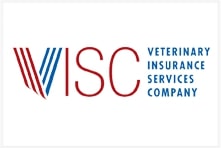This article was originally printed in the January/February 2022 issue of the California Veterinarian magazine.
In early 2020, the high-profile deaths of Breonna Taylor, Ahmaud Arbery, and George Floyd ignited grassroots demonstrations against racial and social injustice. Amid one of the worst pandemics in a century, we saw massive protests taking place not just in the United States but across the globe. We saw the mainstream media narrative explode with stories focused on racial disparities and inequities. We saw diversity, equity, and inclusion (DEI) initiatives increase exponentially throughout corporate America, the entertainment industry, academia, and various other institutions. Veterinary medicine was no exception.
What has been a chronic issue for the veterinary profession in this country for decades was suddenly infused with a new sense of urgency. By fall of the same year, the number of affinity groups and DEI-focused organizations established in veterinary education and the profession at large more than doubled. Additionally, a joint Commission for a Diverse, Equitable, and Inclusive Veterinary Profession was launched by the American Veterinary Medical Association (AVMA) and the American Association for Veterinary Medical Colleges (AAVMC). There has been a surge within veterinary colleges, industries, and professional organizations as leaders are re-prioritizing their DEI initiatives or implementing them for the first time.
While the urgency is palpable, this problem is hardly novel. The veterinary profession has been struggling for years to become more diverse and representative of the society it purports to serve. Could the professional self-reflection described above be the leverage needed to make real change? Some would say the future of the profession depends on it—and they would not be wrong.
The current face of the veterinary profession
The veterinary profession in the United States is often referred to as one of the least diverse professions, particularly with regard to race and ethnicity. Only a decade ago, it was estimated that over 90% of veterinary professionals working in the U.S. were white. A 2013 article in The Atlantic entitled “The 33 Whitest Jobs in America” saw veterinary medicine take first place on the list.
The current demographics of the veterinary student population nationwide look a little more promising, but still fall short of being representative of an increasingly diverse country. The 2020 U.S. Census data shows a significant increase in all non-white racial categories across the nation, resulting in an increase in the Diversity Index, the “chance that two people meeting at random will be of different races.”
The same cannot be said of the veterinary profession. Indeed, while the veterinary student body is slowly becoming more diverse, it remains disproportionately underrepresented in all racial categories other than white, in which it is overrepresented by 30%, according to the AAVMC’s 2020–2021 annual report.
If we look beyond racial categories, the number of students identified as underrepresented in veterinary medicine (URVM) remains less than a quarter of all students, having risen from approximately 5% of the student population since 1980. The AAVMC defines a student as URVM based on gender, race, ethnicity, and geographic, socioeconomic, and educational disadvantage. Of note, both California’s veterinary colleges (WesternU and UC Davis) currently have two of the highest numbers of URVM students enrolled in their DVM programs, coming in second and third place respectively only after Tuskegee University, which is a historically Black college and university.
Clearly, there is more work to be done to create a profession that is truly reflective of the general population. And to be certain, the work is not defined solely by increasing the enrollment of URVM students. We must also be sure that our academic institutions and our workplaces are environments in which everyone can succeed and thrive.
Diversity alone does not guarantee inclusion
“Diversity is sometimes about counting people. Inclusion is always about making people count.” – Steve L. Robbins, Ph.D., DEI Consultant
Much of the work and focus on diversity in the veterinary profession originated within academic circles, with the AAVMC being one of the most effective drivers for change. Traditionally, most of these diversity-related efforts were focused on recruitment and admissions. This makes sense; to diversify the profession, we need to enrich the pipeline by employing outreach efforts that target underrepresented student populations. A common strategy voiced by members of the veterinary community when asked how to increase diversity within the profession is to educate K-12 students about career opportunities in veterinary medicine.
This strategy can be effective, but only if coupled with efforts to create a profession that is inclusive to those of all backgrounds, particularly the historically underrepresented, including those in the LGBTQ+ community and those with disabilities. More recently, DEI efforts have shifted to include addressing campus and workplace climate.
It is not enough to recruit and enroll URVM students; they should feel welcome and included not just on campus but in all veterinary spaces, from the clinics where they gain precious volunteer hours as pre-vets, to the work environments they rotate through during their DVM program. This can be particularly challenging given the relatively monolithic environments that they are entering.
The CVMA recently published a series of articles entitled “Renew,” which focused on mental health and wellness, an issue that has been identified as one of the most critical facing the veterinary profession today. Given that underrepresented populations are disproportionately affected by negative mental health conditions, a commitment to overall veterinary wellness necessitates a concurrent commitment to creating a diverse, inclusive, and equitable veterinary profession.
The road ahead
The CEO of the AAVMC, Dr. Andrew Mccabe, referred to diversity as “the single most important issue” facing the profession and any failure to become more diverse as “an existential threat to our very future.” Indeed, the future of the veterinary profession depends on its ability to serve an increasingly diverse society, and it can only do so by creating space for everyone to succeed and thrive.
The chronic ailment that has plagued the veterinary profession has become spotlighted due to renewed societal conversations about social justice. This presents an opportunity for a renewed commitment to making diversity, equity, and inclusion a priority in the veterinary profession.
More often than not, the pathway to a veterinary career begins with a childhood dream. I look forward to working with the CVMA, its members, and all veterinary professionals to make that dream a possibility for every child who follows it.
Suzie Kovacs graduated from the University of Guelph’s Ontario Veterinary College with a Master of Science in Epidemiology, after which she moved to California and took a faculty position at Western University’s College of Veterinary Medicine. Suzie received a Ph.D. in Higher Education from Claremont Graduate University for work focused on diversity, equity, and inclusion within the veterinary profession. In 2015, she was a charter recipient of the Broad Spectrum Veterinary Student Association LGBTQ+ Awareness Award, a national award that recognizes those who support and confirm inclusivity in veterinary academia, regardless of sexual orientation, gender identity, or gender expression.








